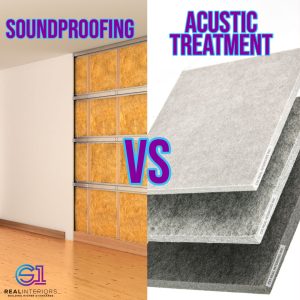 soundproof wall
soundproof wallWhat is Acoustic Treatment?
Acoustic treatment involves controlling reverberations and echoes in a space. While commonly associated with reducing echoes and reverberations, some scenarios require redirecting such echoes, such as in an opera house or a choral chamber. Let’s explore how we can effectively manage reverberations and echoes to improve sound quality.
Types of Acoustic Panels: There are various types of acoustic panels available, ranging from soft to hard surfaces. Soft acoustic panels like fabric or foam offer better Noise Reduction Coefficient (NRC) than hard panels such as timber or perforated metal. Choosing the right type of panel depends on the desired sound absorption level and aesthetic preferences.
Room Requirements: Different rooms have varying requirements for echo control, measured using the RT60 test. Small rooms typically require a lower RT60 time compared to larger venues like auditoriums. The RT60 time also depends on the room’s usage; for example, a vocal recording studio requires a lower RT60 time than a teleconference room.
Installation Tips: Increasing the number of acoustic panels in a room reduces the RT60 time by providing more surfaces for sound absorption. A general guideline is to cover 60% of the exposed walls with acoustic panels to achieve a desirable RT60 time of 0.8 to 1.2 seconds in small to medium-sized rooms.
Soundproofing Distinction: Soundproofing, also known as “sound isolation,” differs from acoustic treatment. It involves preventing sound from entering or exiting a room and requires professional expertise to ensure proper insulation. Combining soundproofing with acoustic treatment creates an optimal acoustic environment, free from external noise and echoes.
In summary, understanding acoustic treatment is essential for improving sound quality in your space. For expert advice and professional assistance with acoustic treatment and soundproofing solutions in Hillsboro, Oregon, contact CS1 Real Interiors Inc. today.







